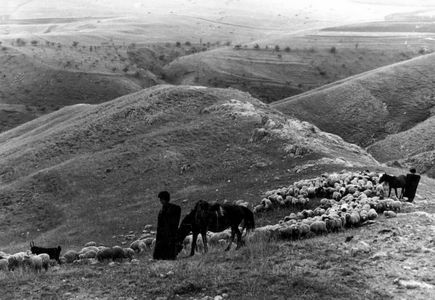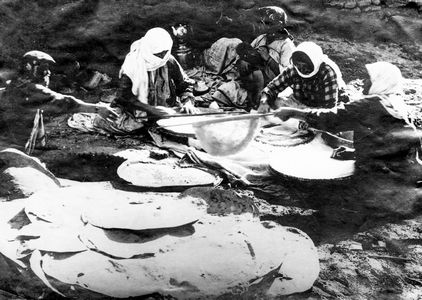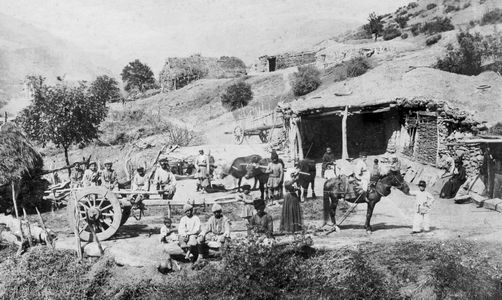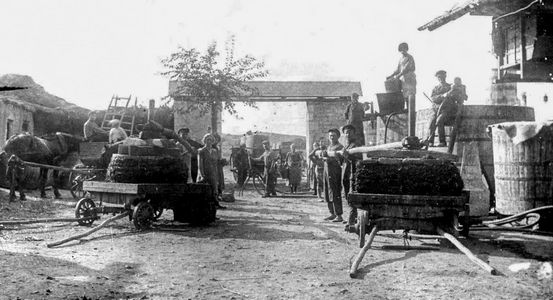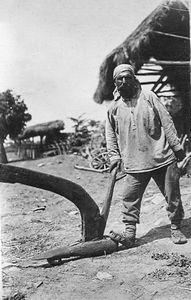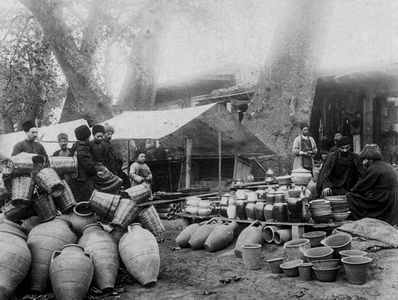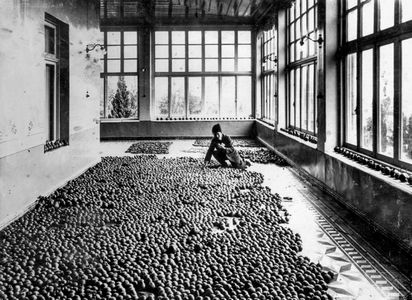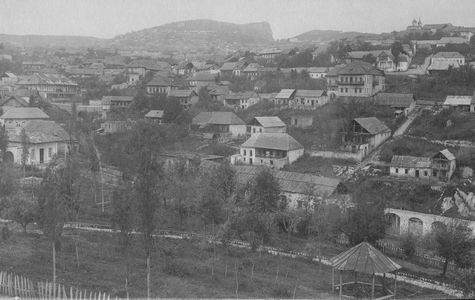Grain growing in Azerbaijan
Azerbaijan is a land of ancient agriculture. As far back as in ancient times on the territory of Azerbaijan there were cultivated wheat, barley, cotton, chaltyk, millet, rye, lentil and other crops. Wheat and barley took the lead by areas under sowing and volume of harvest. Cereals of Azerbaijan fully met needs of the population. Principal centers of cereals in the 18-19 centuries were Karabakh, Shirvan and Quba. The Azerbaijani wheat was exported to Italy, Greece, France, Turkey, Holland, Germany and other European countries. The so-called yellow wheat gained popularity for its high quality, taste and productivity. Prevailing in the cereals were local kinds of wheat and traditional methods of farming. Cultivated in Azerbaijan were wheat like sary bugda, gurgani, gara gylcyk, xyrda bugda, gulusar, kara, garabag bugdasy, ag bugda, sakila bugda, garagika bugda, topbash bugda, etc., as well as barley, including ag arpa, gara arpa, shesheri arpa, gylydji arpa, etc.
Wheat and barley are classified into winter and spring crops. Predominating in Azerbaijan were winter crops. In the reviewed period, there were applied different systems of farming, including ravine, steam, irrigation, etc. Main implements of labor were plough, black plough, wooden harrow, spade, sickle, scythe, pitchfork, etc. Plough was manufactured of wild pear or mulberry and attached to horse or bull.
Chaltyk-growing in Azerbaijan
Chaltyk-growing was one of the major branches of farming. A greater portion of chaltyk cultivated in South Caucasus fell to the share of Azerbaijan. Main regions of chaltyk-growing were Lenkaran, Aresh, Nuha, Zakatala, Karabakh, etc.
This kind of crops was one of the major branches of farming. A greater portion of chaltyk cultivated in South Caucasus fell to the share of Azerbaijan. Main regions of chaltyk-growing were Lenkaran, Aresh, Nuha, Zakatala, Karabakh, etc. In Lenkaran, chaltyk-growing was a specialized agricultural branch. More than 110 villages were engaged in cultivating rice. The following sorts of rice were cultivated in the regions of Azerbaijan: mazandarani, resimi, beybu, ag chila, gyrmyzy chila, chilemberi, shestras, vilgichiri, shataliva, sadri, champo, sheril, reyhani, chileyi, etc. Widely recognized in Azerbaijan were sorts of rice, such as gasymkhany, bahshali, almamed, shabunatum, mamedali, askeri, amirkhan, etc. Rice specialists were awarded to medals and honoraru diplomas for quality and productivity of rice at the international exhibition in London (1862); Kharkov (1887) and Caucasian exhibitions. Main centers of Azerbaijani rice sales were Russian markets. After cutting rice ears, chaltyk was thrashed with the help of buffalos and horses. A peel of chaltyk was removed by rice-cleaner.
Azərbaycanda bağçılıq
Found as a result of excavations, fruit stones bear out fruit-growing on the territory of Azerbaijan. This fact is referred to by medieval authors.
Found as a result of excavations, fruit stones bear out fruit-growing on the territory of Azerbaijan. This fact is referred to by medieval authors. Thus, Evliye Celebi reports that there grew 26 sorts of pear in the village of Garabaglar, Nakhchivan. Main centers of gardening were Quba, Nakhchivan, Shemakha, Geychay, Sheki and Garabakh. Since the 19 century, after the first railways had been built, Azerbaijan fruits came to be delivered to the Russian market. They were exhibited at different agricultural exhibitions. “Abutalybly” won the first place at the international horticulture exhibition in California, 1898.
Vine-growing is one of the oldest businesses of Azerbaijanis to have been developed in the 17-18 centuries. Since the 19 century, the vine-growing began developing as independent branch of agriculture. Main regions of the vine-growing were Absheron, Shirvan, Karabakh, Sheki, Qazakh and Nakhchivan. These included sorts as follows: sarygila, khatyny, ag shany, gara shany, gelin barmagy, gyzyl uzum, shabrany, kishmishi, tebrizi, derbendi, huseyni, aga gormez, rishbaba, marandi.
Cattle-breeding in Azerbaijan
Conducive to the cattle-breeding were grass-rich Mugan, Mil, Shirvan, and Karabakh plains, as well as pasture-rich mountains of Major and Minor Caucasus, Mt. Savalan. Mostly spread in Azerbaijan was the pasture cattle-breeding.
Cattle-breeding in Azerbaijan goes back to times immemorial. Conducive to the cattle-breeding were grass-rich Mugan, Mil, Shirvan, and Karabakh plains, as well as pasture-rich mountains of Major and Minor Caucasus, Mt. Savalan. Mostly spread in Azerbaijan was the pasture cattle-breeding.
Karabakh sheep was the most famous breed in Azerbaijan. Also, widely spread were breeds like bozakh, garadolag, shirvan, mazykh, kherik, balbas, jaro. These breeds were very fat and designed for meat and dairy produce, wool.
The history of neat cattle-breeding in Azerbaijan also goes back to the ancient times. Note that breeds spread in Minor and Major Caucasus provided the local population with meat, milk, butter and leather, and were used as draught in farming and transport. In terms of the pasture cattle-breeding, animals were bred at yaylags and gyshlags. Broader masses gave their preference to sheep’s cheese, cow butter, buffalo katyg and cream. Note that cream was prepared in wooden tubs and copper basins. To prepare butter, there were used churns made of wood, clay and leather.
In the 18 century, horse-breeding and camel-breeding increasingly developed. Famous were Karabakh, Qazakh, Shirvan and Quba breeds. Camel-breeding was typical for plain regions.
